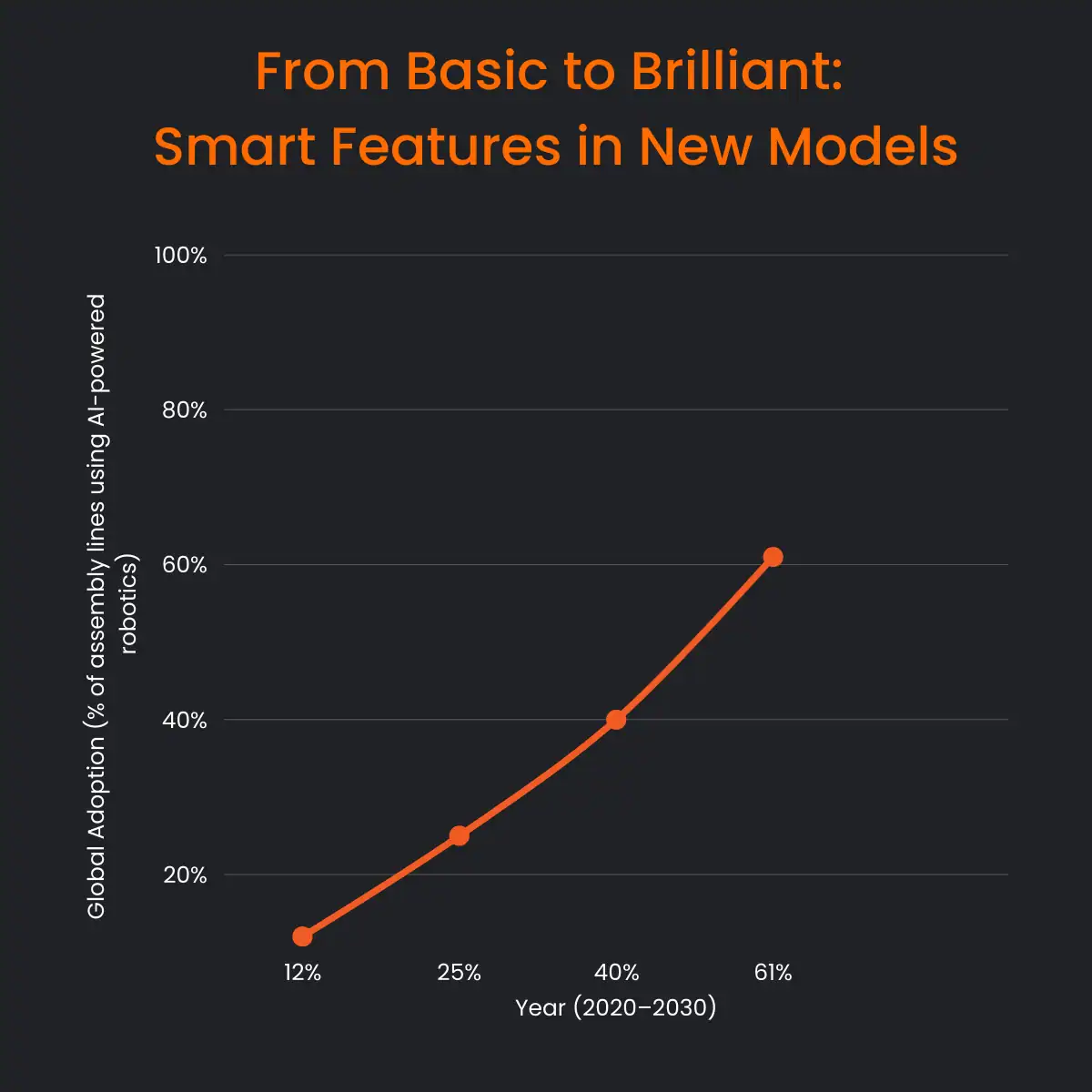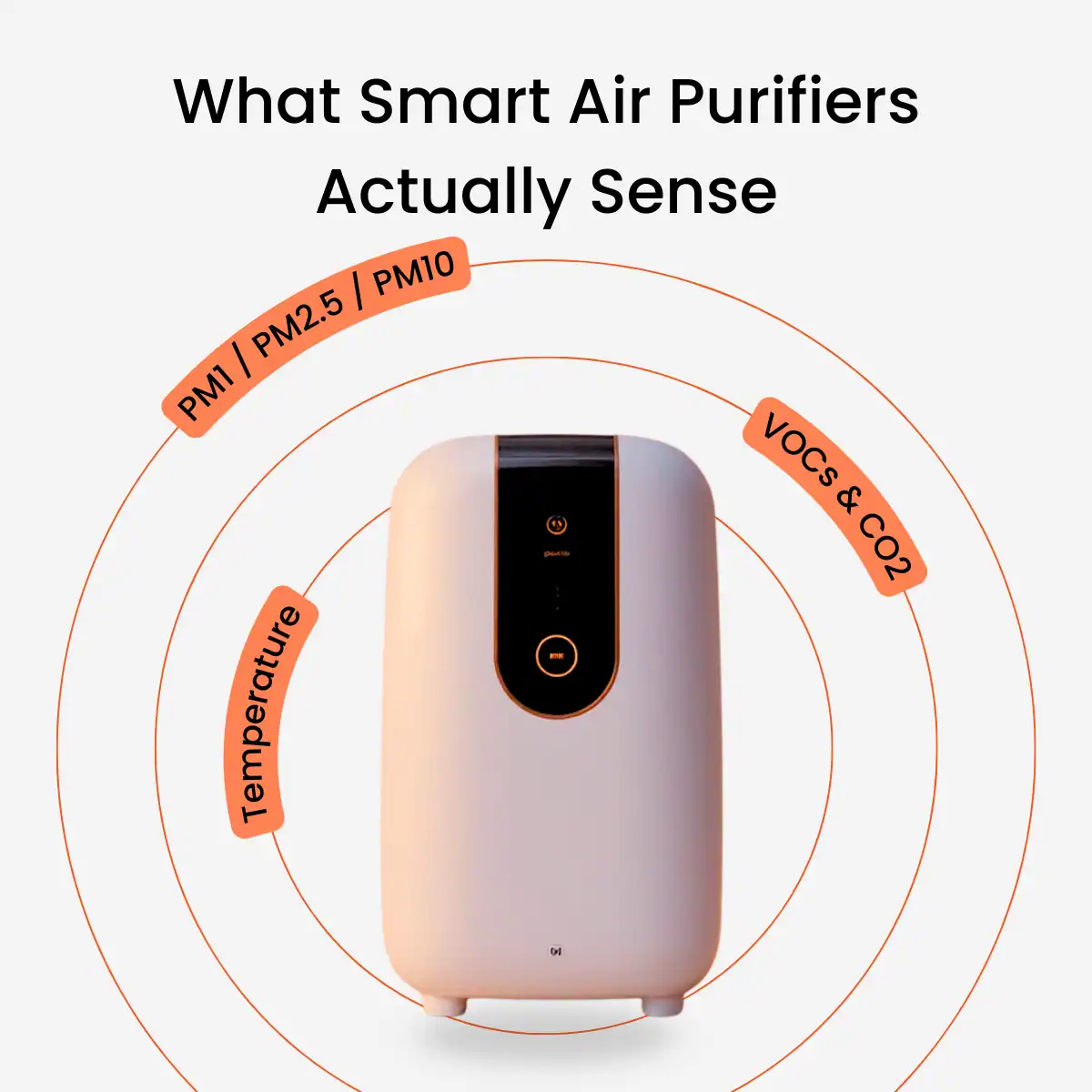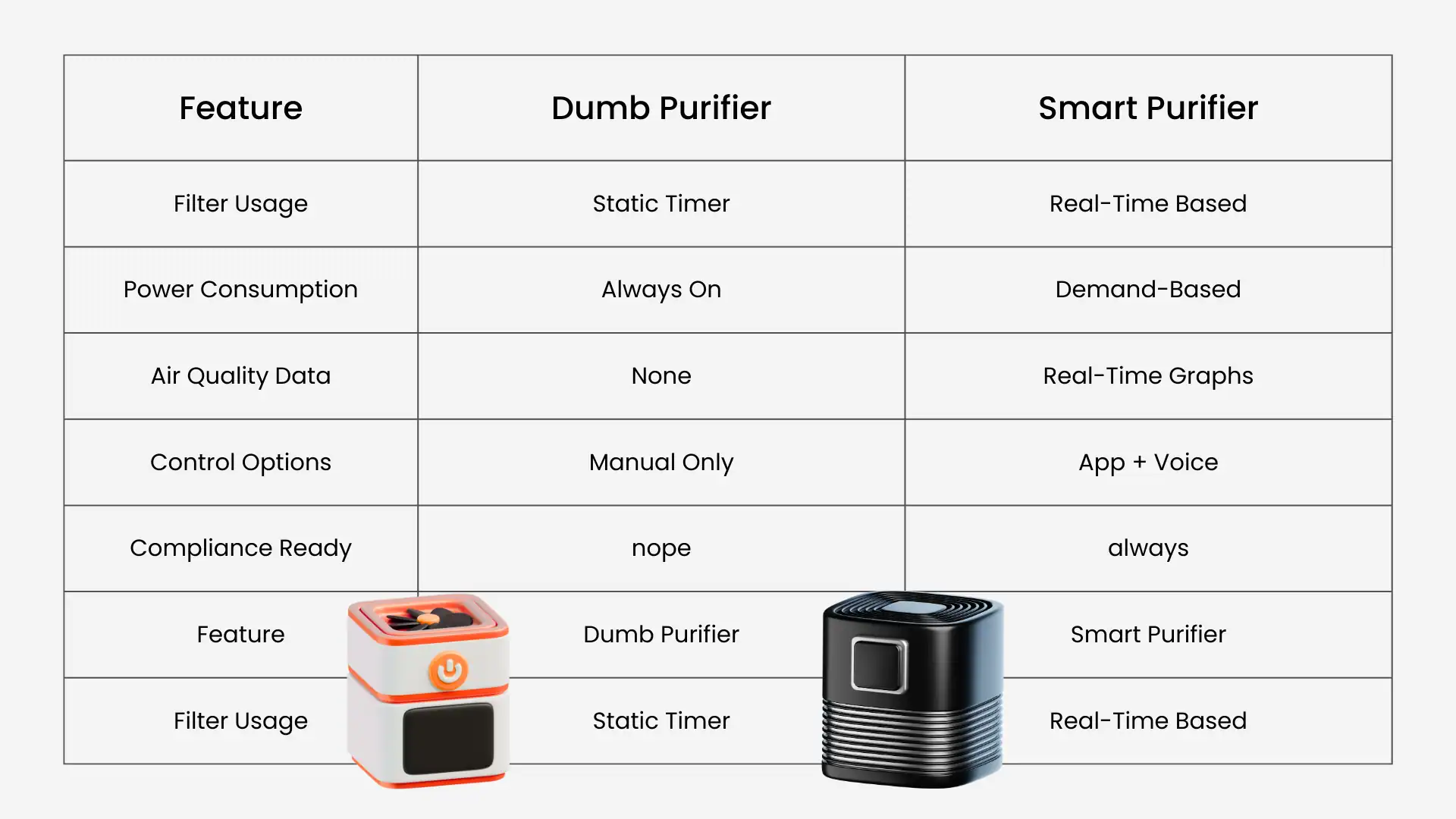Smart Air Purifiers vs. Low-IAQ Fan Boxes: Inside the Rise of Sensor-Driven Clean Air
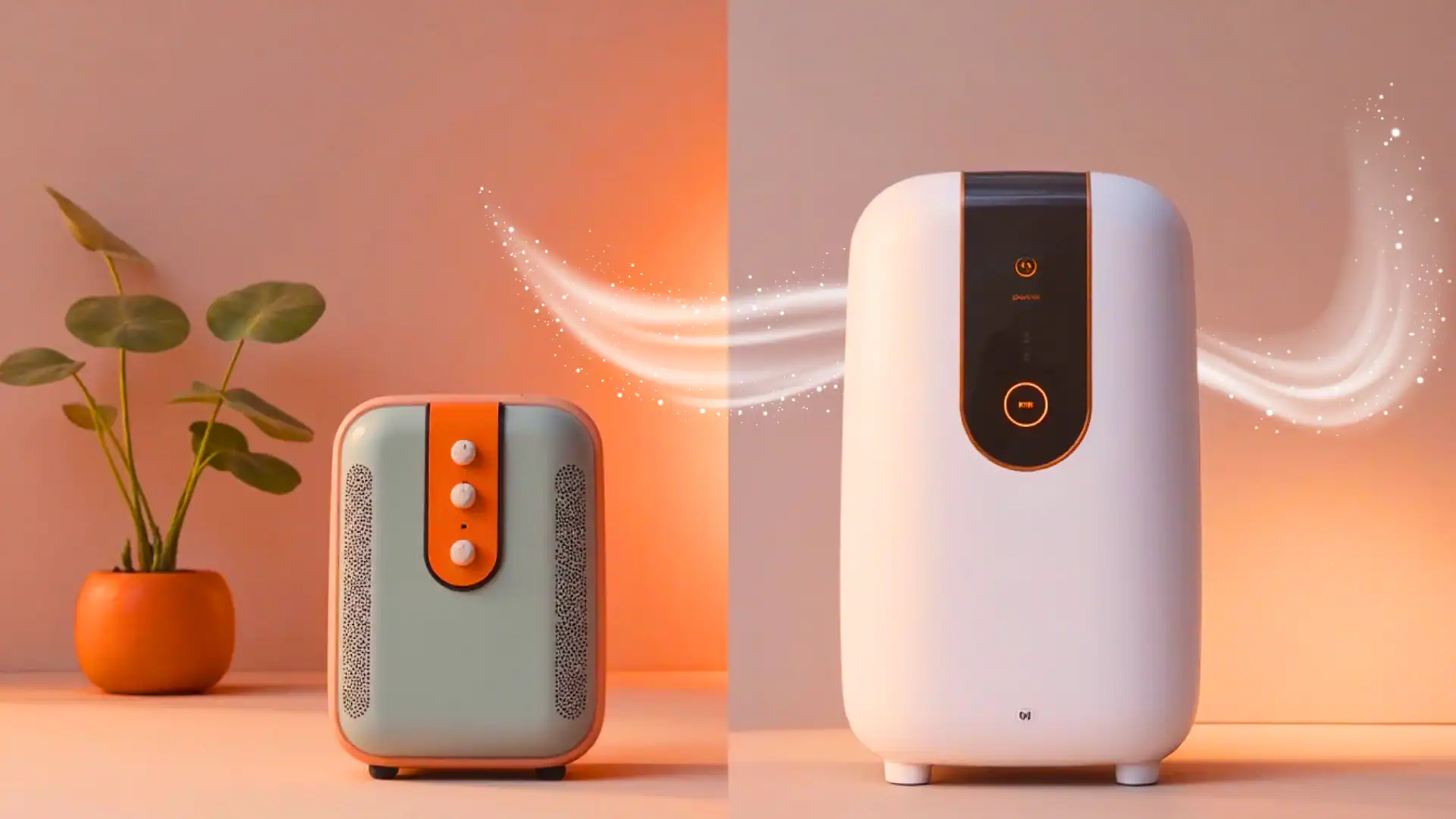
“People now spend approximately 90% of their time indoors.”
— U.S. Environmental Protection Agency (EPA)
Let’s face it. Telling people their air is “clean” simply because the filter’s still humming along is like saying your car’s fine because it hasn’t exploded yet. Welcome to 2025, when even your fridge knows what’s going on inside. So why are we still settling for air purifiers that have no clue about the air they’re cleaning?
The good news? That’s changing fast.
The better news? The real smart air purifiers, packed with IoT brains and precision sensors, are turning into the standard, not the luxury. And that’s not just because people love seeing PM2.5 levels on their phone.
“When you’re designing for indoor air, you’re designing for health. Sensors, data, and clean air delivery aren’t optional anymore.”
— Dr. David Hill, American Lung Association Medical Advisor
From Guesswork to Granular Data: The Sensor Revolution
Today’s air purifiers are no longer dumb boxes with fans and filters. They’re armed with IAQ sensors that measure:
- PM1, PM2.5, and PM10 levels
- VOCs (Volatile Organic Compounds, aka the invisible party crashers in your home)
- CO2 levels
- Temperature & humidity
Your purifier not only gets a harder job as pollution spikes, it knows why and by how much to respond.
Just ask industry leaders, which each doubled down on real-time air quality feedback with connected apps and response-sensitive auto modes. Blueair’s HealthProtect 7770i, for example, uses laser particle sensors to detect pollutants at 0.1 micron and instantly ramps up airflow when thresholds are reached.
IoT Connectivity: Because Your Air Deserves a Push Notification
Adding sensors is one thing. But connecting those insights to your phone (or smart home) is where things get interesting.
With Wi-Fi and Bluetooth, smart purifiers in the modern era:
- Push IAQ data in real-time to apps
- Enable you to set fan speed or schedules remotely
- Seamlessly integrate with Alexa, Google Assistant, and Apple HomeKit
- Go hand in hand with HVAC or home energy systems to optimize total indoor climate control
Companies like Coway (Airmega), Philips, and Molekule are all rolling out connected platforms, some even offering IAQ trend dashboards, maintenance reminders, and remote diagnostics. So, if your purifier’s filter is clogged or your VOC levels spike because of last night’s curry experiment, you’ll know. Immediately.
“Search interest for ‘PM2.5’ has increased by over 300% since 2020, with spikes during wildfire seasons and pollution events.”
— Google Trends
But Wait, It’s Not Just Cool Tech. We’re talking ‘Engineering with ROI’
Let’s talk specs. Because we’re not just here for blinking lights and mobile apps. The real impact is measured in CADR/watt, noise levels, and filter lifespan.
Smart air purifiers, when designed right, actually optimise energy use. By responding to real-time pollution levels, they avoid running at full speed unnecessarily. This means:
- Lower electricity bills
- Longer filter life
- Reduced noise (because who wants a jet engine in their living room?)
According to AHAM (Association of Home Appliance Manufacturers), average CADR per watt is becoming a performance benchmark in premium purifier categories. A high-efficiency unit can deliver >300 CADR while pulling less than 40W under normal conditions when paired with smart sensors and variable-speed motors.
IAQ: Just another Buzzword or a Global Policy Now?
Governments and testing authorities are paying attention. And that makes it your business too.
- ISO 16890 is the latest international filter test standard, replacing outdated EN779. It assesses filtration efficiency across a range of particulate sizes rather than just 0.4 microns.
- Energy Star 2.0 now incorporates energy usage in Auto Mode as an incentive for sensor-equipped products.
- Chinese air purifiers must meet GB/T 18801 standards, which more and more encompass sensor accuracy within compliance.
The end result is a win. Smarter purifiers aren’t a novelty. They’re a quality and compliance differentiator for global markets.
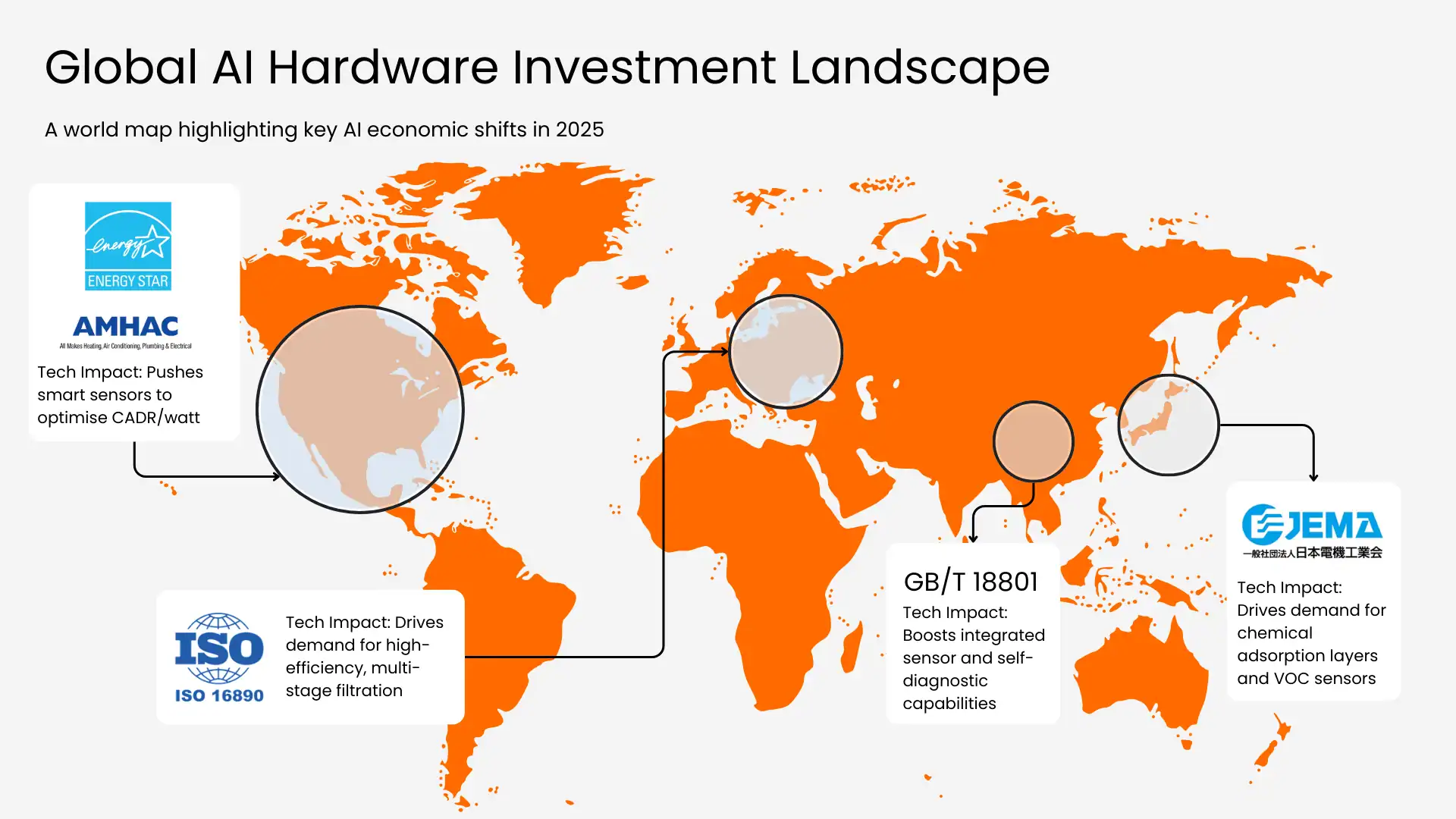
“ISO 16890 has become the global reference standard for air filter testing and classification, replacing EN 779 in most regions.”
— Eurovent Certita Certification
Predictive Maintenance: Filters That Tell You When They’re Done
Most users don’t replace filters until they can smell the problem. And by then? You know what. Forget it.
IoT-based, purifiers now track:
- Run time
- Fan speed patterns
- Sensor-based pollutant load
Add to that AI-driven models, and your air purifier can predict when it is due for a filter change, to the week.
IQAir, for example, includes intelligent filter life monitoring that adjusts based on air quality and usage intensity, instead of a countdown timer. That’s not just smart. It’s cost-effective and eco-friendly.
Integration with BMS & HVAC Systems
In large-scale applications, think hospitals, schools, or office buildings, purifiers are increasingly BMS-compatible (Building Management Systems). This allows for:
- Networked control of air purifiers
- Energy-efficient load balancing
- Integration with CO2 sensors for occupancy-driven ventilation
It’s the industrial cousin of your smart home purifier, scaled up and souped up.

“Over 60% of new air purifier models launched in 2023 featured app connectivity or built-in sensors.”
— Internal analysis of top brands: Dyson, Coway, Xiaomi, Philips
The Future: Edge AI and Local Decision-Making
We’re moving toward air purifiers that don’t even need the cloud to make decisions.
With AI chips on board, air purifiers will:
- Learn local pollution trends
- Adapt behaviour based on time-of-day and usage
- Cross-correlate temperature/humidity with PM/VOC behaviour for smart filtering
Edge computing provides faster response times, better privacy, and reduced reliance on constant internet connectivity, a data security real-time air quality win-win.
So… Do All Air Purifiers Need to Be Smart Now?
Short answer: Yes.
Longer answer: They will be, or they’ll become obsolete.
Customers of today want feedback, control, and intelligence. Procurement teams are thinking Total Cost of Ownership, not just upfront cost. Engineers are designing for modularity, sensing, and efficiency from the ground up.
It’s not a trend. It’s the new minimum standard.
“Consumers no longer want to guess if their air is clean. They want real-time feedback, automation, and results.”
— Peter Favilla, VP of Consumer Business, Blueair
Final Take
Advanced air purifiers are no longer “premium.” They are functional, compliant, and the new normal.
Whether you’re creating them, purchasing them, or trying to stay current in the B2B air cleaning industry, IoT and sensor integration is the new MVP.
The next time someone utters the line, “It’s merely a fan with a filter,” politely introduce them to the app, the IAQ data trends, and the automatic estimator for filter life. Then watch them breathe their words.
Explore more related content
Why Air Quality Devices Are the Fastest-Growing Smart Home Category in 2025
Why Air Quality Devices Are the Fastest-Growing Smart Home Category in 2025H6: “96% of Europe’s urban population is...
Critical Minerals, Critical Thinking: Building Resilient Electronics Supply Chains
Critical Minerals, Critical Thinking: Building Resilient Electronics Supply ChainsThe global economy is expected to...
Cybersecurity for Smart Factories: A 2025 Playbook for OT Resilience
Cybersecurity for Smart Factories: A 2025 Playbook for OT ResilienceWhy "smart" now means "secure" or not at all Smart...
